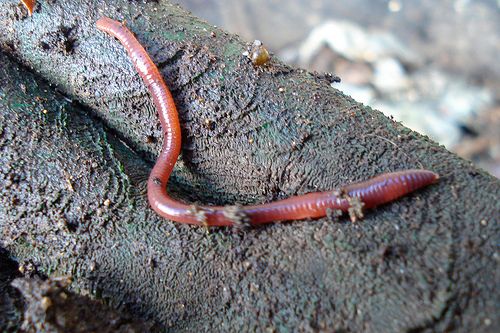Making Best Use Of the Benefits of Red Wiggler Worms: A Comprehensive Handbook for Home Gardeners and Urban Farmers
In the realm of sustainable gardening techniques, red wiggler worms stand as unsung heroes, quietly changing natural waste into nutrient-rich castings that can work marvels for soil health. By discovering the details of just how to efficiently care for and take full advantage of the advantages of red wiggler worms, individuals can open a riches of possibilities for improving the sustainability and performance of their gardening endeavors.
Understanding Red Wiggler Worms
Red Wiggler worms, renowned for their effective composting capacities, are a types of earthworms extensively utilized in vermiculture practices. These worms, clinically recognized as Eisenia fetida, grow in rotting natural product, making them excellent candidates for composting.
One key attribute of Red Wiggler worms is their reproductive price. These hermaphroditic animals have both male and female reproductive organs, permitting them to recreate swiftly under beneficial conditions. A mature Red Wiggler can create multiple children in a brief duration, making certain a steady populace within a composting system.

Establishing Up a Worm Container
When establishing a worm container for vermiculture purposes, correct prep work and interest to detail are crucial for producing a favorable environment for Red Wiggler worms,. Begin by selecting an ideal container for your worm container. This can be a plastic or wood container with a lid to keep wetness levels and protect the worms from light. Ensure that the container has water drainage openings at the bottom to stop waterlogging.

Area the worm container in a cool, dark area away from straight sunlight and extreme temperature levels. By complying with these actions, you can establish up a growing worm container that will efficiently process organic waste into nutrient-rich vermicompost for your yard.
Feeding and Preserving Worms
Making certain a well balanced and nourishing diet is essential for the health and efficiency of Red Wiggler worms in a vermiculture system. It is essential to prevent feeding them citrus fruits, onions, garlic, dairy items, meat, and oily foods as these can be unsafe to the worms or trigger unpleasant smells in the bin.
Appropriate dampness degrees are also crucial for the wellness of Red Wiggler worms. The bed linens must seem like a moist sponge, supplying sufficient wetness for the worms to breathe via their skin. On a regular basis inspect the dampness degrees and adjust by including water or dry bed linen product as required. In addition, maintaining appropriate temperature level conditions in between 55-77 ° F(13-25 ° C )will certainly guarantee optimal worm task and recreation. By faithfully monitoring their diet plan, wetness, and environmental problems, home garden enthusiasts and city farmers can maintain a productive and healthy and balanced Red Wiggler worm populace for composting functions.
Collecting Worm Castings
To effectively remove nutrient-rich worm spreadings from the vermicompost, an organized harvesting process is necessary for making best use of the composting benefits. The first action in gathering worm spreadings is to encourage the worms to move to one side of the bin.
After the spreadings have been collected, it is very important to separate any remaining worms from the spreadings to prevent damaging them throughout storage or application. One effective technique is to create conical piles of castings under bright light. Worms will intuitively relocate Look At This away from the light, permitting very easy separation and elimination.
Finally, the collected worm castings should be stored in a cool, dark, and dry place to maintain their top quality and efficiency as a nutrient-rich soil change. By following these steps, home garden enthusiasts and metropolitan farmers can make the most of the advantages of red wiggler worms in their vermicomposting systems.
Using Worm Castings in Horticulture
The unification of nutrient-rich worm castings right into garden dirt can significantly enhance plant development and overall soil health and wellness. Worm castings, likewise called vermicast, are a natural fertilizer created by red wiggler worms as they damage down organic issue. These spreadings are abundant in important nutrients like nitrogen, phosphorus, potassium, and valuable germs that advertise plant growth and boost dirt structure.
When utilizing worm spreadings in gardening, it is essential to mix them extensively into the soil or utilize them as a top dressing around plants. The slow-release nature of worm spreadings makes sure a stable supply of nutrients to plants gradually, minimizing the threat of nutrient leaching and promoting long-term soil fertility. In addition, worm castings help boost soil oygenation, water retention, and microbial task, creating a healthy and balanced environment for plant origins to flourish.

Final Thought
In verdict, the utilization of red wiggler worms in home gardening and urban farming can considerably profit dirt wellness and plant development. By comprehending exactly why not try these out how to set up and preserve a worm container, feed the worms correctly, and harvest their nutrient-rich castings, garden enthusiasts can maximize the benefits of these earthworms.
In the world of sustainable horticulture practices, red wiggler worms stand as unrecognized heroes, silently transforming natural waste right into nutrient-rich castings that can work marvels for soil health.When developing a worm bin for vermiculture objectives, correct preparation and focus to information are essential for developing a helpful atmosphere for Red Wiggler worms. The read the full info here very first action in harvesting worm castings is to motivate the worms to move to one side of the bin. Worm castings, additionally recognized as vermicast, are a natural plant food produced by red wiggler worms as they damage down organic issue. By understanding exactly how to set up and keep a worm container, feed the worms appropriately, and collect their nutrient-rich spreadings, gardeners can optimize the advantages of these earthworms.